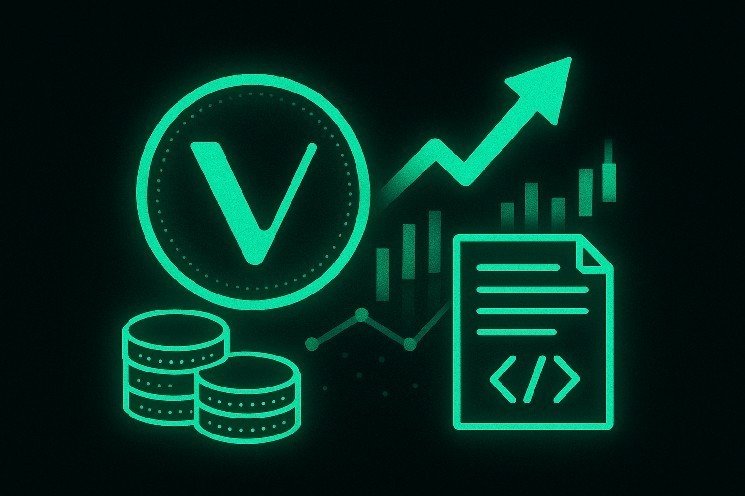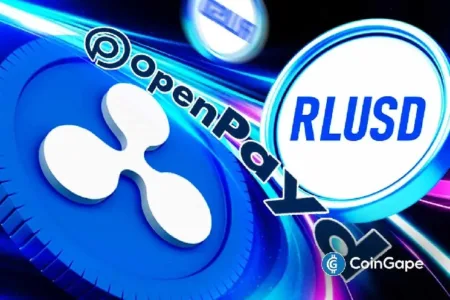- In this exclusive interview, Crypto News Flash’s Collin Brown sits down with VeChain CEO Sunny Lu to discuss the highly anticipated launch of StarGate—the new staking upgrade set to reshape the VeChain ecosystem.
- Together, they explore how the upgrade impacts everyday VET holders, addresses regulatory shifts, and opens new doors for both retail and institutional participants.
Collin Brown: What’s the main advantage of the new StarGate staking program for everyday VET holders?
Sunny Lu: StarGate lowers friction and increases benefits for existing VET holders. The upgrade makes staking accessible to more users by lowering the minimum requirement to 10,000 VET. It also introduces enhanced APY through a $15 million bonus pool, and allows direct participation from self-custody using NFT-based staking. Everyday holders can now earn meaningful rewards without relying on third parties.
Collin Brown: How did VeChain prepare for the SEC’s latest crypto staking guidance?
Sunny Lu: The SEC guidance clarifying that protocol staking activities do not constitute securities offerings is in line with the model that VeChain designed with StarGate, as it treats staking rewards as compensation for providing network services rather than as investment returns. The NFT-based approach supports self-custody and removes intermediaries, aligning with regulatory expectations.
Collin Brown: Why did you choose NFTs as the vehicle for staking participation and rewards?
Sunny Lu: NFTs allow for flexible, transparent, and secure representation of staking positions. They simplify the staking process, ensure rewards are directly tied to network participation, and create a clear structure that appeals to both users and regulators.
Collin Brown: What do you hope to achieve during the initial six-month $15M bonus phase?
Sunny Lu: The bonus phase is intended to drive rapid adoption of the new staking system, migrate existing node holders, and attract new participants. It creates a strong incentive to join early and contributes to network decentralization and security.
Collin Brown: How are you working with institutions as ETF interest in staking grows?
Sunny Lu: VeChain’s infrastructure is built to support institutional participation. With the SEC’s new guidance and banks entering the validator space, the NFT-based model offers a compliant and scalable way for institutions to engage with protocol staking.
Collin Brown: Does lowering the staking minimum to 10,000 VET create any security risks?
Sunny Lu: No, the new Weighted Delegated Proof of Stake mechanism maintains strong network security while enabling broader participation. Lowering the threshold increases decentralization without compromising the underlying protocol integrity.
Collin Brown: What’s the next major step after this protocol upgrade?
Sunny Lu: StarGate is part of the broader VeChain Renaissance roadmap, which includes features like EVM equivalence and JSON RPC compatibility. The next steps likely involve governance upgrades, expansion of the staking ecosystem, and continued developer and institutional adoption.
Collin Brown: Can traditional banks or asset managers join VeChain staking soon?
Sunny Lu: Yes, the infrastructure is ready for institutional adoption. With self-custody staking via NFTs and regulatory alignment, VeChain offers a model that traditional financial institutions can use to engage with crypto staking securely and directly.
Collin Brown: How will you support users moving VET from exchanges to self-custody?
Sunny Lu: VeChain has outlined a clear path for users to participate by moving VET to self-custody wallets. Tools like VeChainStats and Redeno help users model rewards and select the appropriate staking tier.
Collin Brown: Will the new staking model also help advance VeChain’s sustainability goals?
Sunny Lu: Yes, the staking model supports the VeBetter Ecosystem, which incentivizes sustainable actions through tokenization. By encouraging long-term holding and active network participation, StarGate directly contributes to VeChain’s mission of creating positive social and environmental impact.
Collin Brown:Thank you to Sunny Lu for sharing his insights into the StarGate launch and VeChain’s evolving vision. As the protocol expands access and deepens its sustainability mission, both everyday users and institutions have much to look forward to in the next chapter of VeChain’s journey.
Read the full article here










